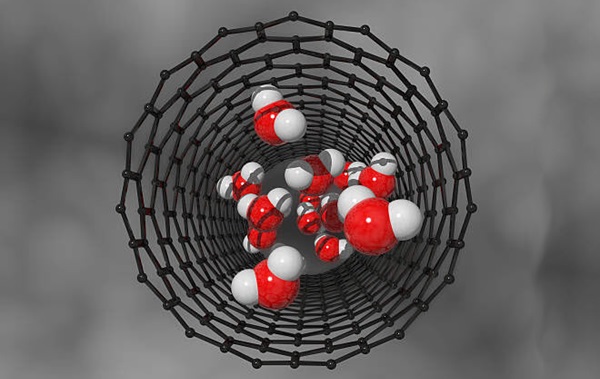Improving the Reliability of Biometric Authentication Processes Using a Model for Reducing Data Drift
Downloads
Doi:10.28991/ESJ-2024-08-06-018
Full Text:PDF
Downloads
Ryu, R., Yeom, S., Kim, S. H., & Herbert, D. (2021). Continuous Multimodal Biometric Authentication Schemes: A Systematic Review. IEEE Access, 9, 34541–34557. doi:10.1109/ACCESS.2021.3061589.
Ryu, R., Yeom, S., Herbert, D., & Dermoudy, J. (2023). The design and evaluation of adaptive biometric authentication systems: Current status, challenges and future direction. ICT Express, 9(6), 1183–1197. doi:10.1016/j.icte.2023.04.003.
Kurowski, M., Sroczyński, A., Bogdanis, G., & CzyŠ¼ewski, A. (2021). An automated method for biometric handwritten signature authentication employing neural networks. Electronics (Switzerland), 10(4), 1–19. doi:10.3390/electronics10040456.
Zenisek, J., Holzinger, F., & Affenzeller, M. (2019). Machine learning based concept drift detection for predictive maintenance. Computers and Industrial Engineering, 137, 106031. doi:10.1016/j.cie.2019.106031.
Chen, K., Koh, Y. S., & Riddle, P. (2015). Tracking drift severity in data streams. In Lecture Notes in Computer Science (including subseries Lecture Notes in Artificial Intelligence and Lecture Notes in Bioinformatics) (Vol. 9457, pp. 96–108). Springer. doi:10.1007/978-3-319-26350-2_9.
Jain, A. K., Ross, A., & Prabhakar, S. (2004). An Introduction to Biometric Recognition. IEEE Transactions on Circuits and Systems for Video Technology, 14(1), 4–20. doi:10.1109/TCSVT.2003.818349.
Bharadwaj, S., Amin, P., Ramya, D. J., & Parikh, S. (2024). Reliable human authentication using AI-based multibiometric image sensor fusion: Assessment of performance in information security. Measurement: Sensors, 33, 101140. doi:10.1016/j.measen.2024.101140.
Alshazly, H., Elmannai, H., Alkanhel, R. I., & Abdelnazeer, A. (2024). Advancing Biometric Identity Recognition with Optimized Deep Convolutional Neural Networks. Traitement Du Signal, 41(3), 1405–1418. doi:10.18280/ts.410329.
Gaber, T., Nicho, M., Ahmed, E., & Hamed, A. (2024). Robust thermal face recognition for law enforcement using optimized deep features with new rough sets-based optimizer. Journal of Information Security and Applications, 85, 103838. doi:10.1016/j.jisa.2024.103838.
Bleha, S., Slivinsky, C., & Hussien, B. (1990). Computer-Access Security Systems Using Keystroke Dynamics. IEEE Transactions on Pattern Analysis and Machine Intelligence, 12(12), 1217–1222. doi:10.1109/34.62613.
Gunetti, D., Picardi, C., & Ruffo, G. (2005). Keystroke analysis of different languages: A case study. Lecture Notes in Computer Science (including subseries Lecture Notes in Artificial Intelligence and Lecture Notes in Bioinformatics): Vol. 3646 LNCS, 133–144. Springer. doi:10.1007/11552253_13.
Crawford, H. (2010). Keystroke dynamics: Characteristics and opportunities. PST 2010: 2010 8th International Conference on Privacy, Security and Trust, 205–212. doi:10.1109/PST.2010.5593258.
Sumalatha, U., Prakasha, K. K., Prabhu, S., & Nayak, V. C. (2024). A Comprehensive Review of Unimodal and Multimodal Fingerprint Biometric Authentication Systems: Fusion, Attacks, and Template Protection. IEEE Access, 12, 64300–64334. doi:10.1109/ACCESS.2024.3395417.
Budžys, A., Kurasova, O., & Medvedev, V. (2024). Deep learning-based authentication for insider threat detection in critical infrastructure. Artificial Intelligence Review, 57(10), 272. doi:10.1007/s10462-024-10893-1.
Alexandrov, I. A., Kirichek, A. V., Kuklin, V. Z., & Chervyakov, L. M. (2023). Development of an Algorithm for Multicriteria Optimization of Deep Learning Neural Networks. HighTech and Innovation Journal, 4(1), 157–173. doi:10.28991/HIJ-2023-04-01-011.
Ding, S., Li, H., Su, C., Yu, J., & Jin, F. (2013). Evolutionary artificial neural networks: A review. Artificial Intelligence Review, 39(3), 251–260. doi:10.1007/s10462-011-9270-6.
Hajinazar, S., Thorn, A., Sandoval, E. D., Kharabadze, S., & Kolmogorov, A. N. (2021). MAISE: Construction of neural network interatomic models and evolutionary structure optimization. Computer Physics Communications, 259, 107679. doi:10.1016/j.cpc.2020.107679.
Alrawili, R., AlQahtani, A. A. S., & Khan, M. K. (2024). Comprehensive survey: Biometric user authentication application, evaluation, and discussion. Computers and Electrical Engineering, 119, 109485. doi:10.1016/j.compeleceng.2024.109485.
Wang, X., Wang, S., Liang, X., Zhao, D., Huang, J., Xu, X., Dai, B., & Miao, Q. (2024). Deep Reinforcement Learning: A Survey. IEEE Transactions on Neural Networks and Learning Systems, 35(4), 5064–5078. doi:10.1109/TNNLS.2022.3207346.
Loufakis, M., Manis, O., Kioroglou, C., Kolokas, N., Ioannidis, D., Tzovaras, D., & Stankovski, M. (2024). Intelligent Model Management: Using Reinforcement Learning to Detect Data Drift and Retrain Industrial Machine Learning Systems. 26th International Conference on Digital Signal Processing and Its Applications, DSPA 2024, Moscow, Russian Federation. doi:10.1109/DSPA60853.2024.10510082.
Liew, S. H., Choo, Y. H., & Low, Y. F. (2019). Fuzzy-rough classification for brainprint authentication. Jordanian Journal of Computers and Information Technology, 5(2), 109–121. doi:10.5455/jjcit.71-1556703387.
Hosseinzadeh, D., & Krishnan, S. (2008). Gaussian mixture modeling of keystroke patterns for biometric applications. IEEE Transactions on Systems, Man and Cybernetics Part C: Applications and Reviews, 38(6), 816–826. doi:10.1109/TSMCC.2008.2001696.
Jeanjaitrong, N., & Bhattarakosol, P. (2013). Feasibility study on authentication based keystroke dynamic over touch-screen devices. 13th International Symposium on Communications and Information Technologies: Communication and Information Technology for New Life Style beyond the Cloud, ISCIT 2013, 238–242. doi:10.1109/ISCIT.2013.6645856.
Borodin, A. A., Kabulova, E. G., & Polozhentsev, K. A. (2016). Video detection of problems in the melting of consumable electrodes in a vacuum arc furnace. Steel in Translation, 46(5), 322–324. doi:10.3103/S0967091216050041.
Berto, R. (2014). The role of nature in coping with psycho-physiological stress: A literature review on restorativeness. Behavioral Sciences, 4(4), 394–409. doi:10.3390/bs4040394.
Quigley, K. S., Gianaros, P. J., Norman, G. J., Jennings, J. R., Berntson, G. G., & de Geus, E. J. C. (2024). Publication guidelines for human heart rate and heart rate variability studies in psychophysiology”Part 1: Physiological underpinnings and foundations of measurement. Psychophysiology, 61(9), 1–63. doi:10.1111/psyp.14604.
Bach, D. R., Castegnetti, G., Korn, C. W., Gerster, S., Melinscak, F., & Moser, T. (2018). Psychophysiological modeling: Current state and future directions. Psychophysiology, 55(11), 13214. doi:10.1111/psyp.13209.
Borgianni, Y., & MacCioni, L. (2020). Review of the use of neurophysiological and biometric measures in experimental design research. Artificial Intelligence for Engineering Design, Analysis and Manufacturing: AIEDAM, 34(2), 248–285. doi:10.1017/S0890060420000062.
Ge, Y., Xu, X., Li, J., Lu, X., & Zhang, K. (2007). The effect of secondary task on driving performance, physiological indices and mental workload: A study based on simulated driving. International Conference on Transportation Engineering 2007, ICTE 2007, 38, 491–496. doi:10.1061/40932(246)81.
Rosen, O., & Thompson, W. K. (2009). A Bayesian regression model for multivariate functional data. Computational Statistics and Data Analysis, 53(11), 3773–3786. doi:10.1016/j.csda.2009.03.026.
Bookstein, F. L. (2019). Reflections on a Biometrics of Organismal Form. Biological Theory, 14(3), 177–211. doi:10.1007/s13752-019-00320-y.
Holsapple, C. W., Lee, A., & Otto, J. (1997). A machine learning method for multi-expert decision support. Annals of Operations Research, 75, 171–188. doi:10.1023/a:1018955328719.
Dasgupta, D. (2007). Advances in artificial immune systems. IEEE Computational Intelligence Magazine, 1(4), 40–49. doi:10.1109/mci.2006.329705.
Gehrlein, W. V. (1983). Condorcet's paradox. Theory and Decision, 15(2), 161–197. doi:10.1007/BF00143070.
Revett, K., Tenreiro De Magalhí£es, S., & Santos, H. M. D. (2007). On the use of rough sets for user authentication via keystroke dynamics. In Lecture Notes in Computer Science (including subseries Lecture Notes in Artificial Intelligence and Lecture Notes in Bioinformatics): Vol. 4874 LNAI, 145–159. Springer. doi:10.1007/978-3-540-77002-2_13.
Hammad, M., Luo, G., & Wang, K. (2019). Cancelable biometric authentication system based on ECG. Multimedia Tools and Applications, 78(2), 1857–1887. doi:10.1007/s11042-018-6300-2.
Blasco, J., & Peris-Lopez, P. (2018). On the feasibility of low-cost wearable sensors for multi-modal biometric verification. Sensors (Switzerland), 18(9), 2782. doi:10.3390/s18092782.
Marteau, P. F. (2021). Random Partitioning Forest for Point-Wise and Collective Anomaly Detection - Application to Network Intrusion Detection. IEEE Transactions on Information Forensics and Security, 16, 2157–2172. doi:10.1109/TIFS.2021.3050605.
Yu, E., & Cho, S. (2004). Keystroke dynamics identity verification - Its problems and practical solutions. Computers and Security, 23(5), 428–440. doi:10.1016/j.cose.2004.02.004.
Killourhy, K. S., & Maxion, R. A. (2009). Comparing anomaly-detection algorithms for keystroke dynamics. Proceedings of the International Conference on Dependable Systems and Networks, 125–134. doi:10.1109/DSN.2009.5270346.
Tyapkin, V. N., Ishchuk, I. N., Kabulova, E. G., Semenov, M. E., & Meleshenko, P. Ð. (2016). Singular Spectral Analysis in Filtration of Noise-contaminated Signals of Pseudolite Navigation. Indian Journal of Science and Technology, 9(46), 107567. doi:10.17485/ijst/2016/v9i46/107567.
Muliono, Y., Ham, H., & Darmawan, D. (2018). Keystroke Dynamic Classification using Machine Learning for Password Authorization. Procedia Computer Science, 135, 564–569. doi:10.1016/j.procs.2018.08.209.
- This work (including HTML and PDF Files) is licensed under a Creative Commons Attribution 4.0 International License.



















